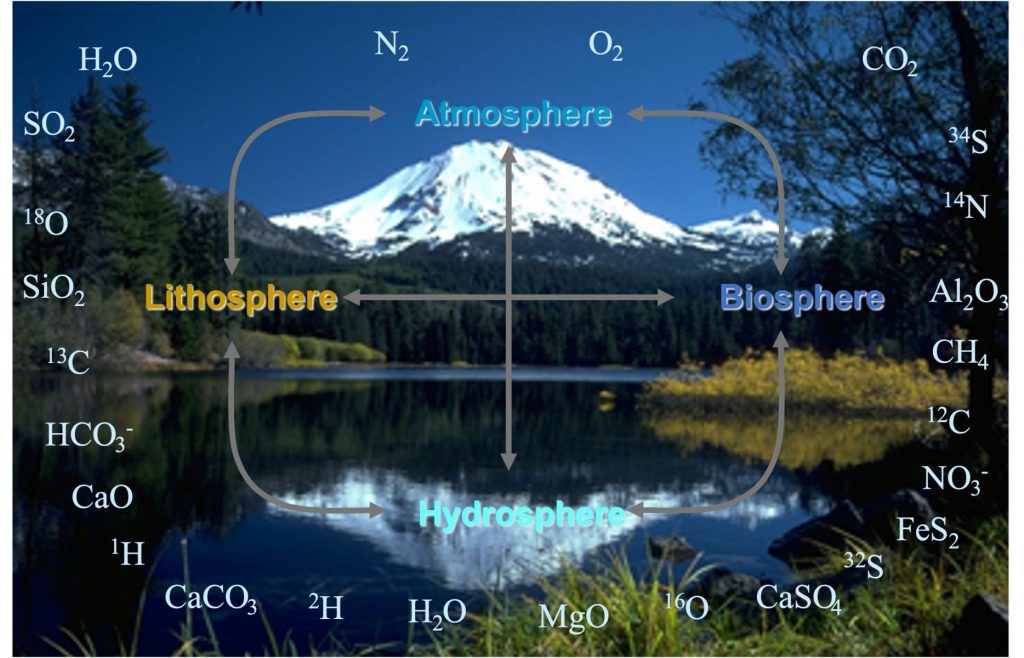Stable isotope geochemistry is a powerful method to trace the origin and interactions between fluids, gases, and solids on almost all scales of Earth’s science processes, be they natural processes such as interactions between the hydrosphere, biosphere and geosphere, or induced by human activities. In addition, the stable isotope compositions of liquids, gases, solids, and minerals characterize the thermodynamic properties (notably formation temperature) of compounds containing the compounds. Not surprisingly, the areas of application of stable isotope research covered by the ISOLAB research group are also very wide, including relevant research topics for “deep-earth” processes and Earth’s economic resource potential, but more importantly focussing on pressing questions concerning low temperature environmental geochemistry in a broad sense.

A good part of the research in the ISOLAB group focusses on the development of state-of-the-art analytical methods.The motivation behind this method development is, however, the application of stable isotope measurements to address pressing scientific questions relating to the importance of natural processes versus human-induced fluid(gas)-biosphere-geosphere interactions as well as the influence of climatic change on these interactions. Current research topics in collaboration with colleagues from IDYST and ISTE includes the characterization of nutrient cycling in biogeochemical and hydrologic systems, as well as tracing the origins and nutrient cycling in biogeochemical and hydrologic systems, as well as tracing the origins and distribution of contaminants within surface and sub-surface waters and a general assessment of the prevailing hydrogeological conditions that may all have an impact on the water quality.This research on Earth surface processes is extended to investigations of Recent as well as Quaternary and older terrestrial and oceanic sedimentary records (bulk sediment, fossils, organic matter, tree-rings, etc.) that serve as archives of ecological and environmental changes as a function of (paleo-)climatic or more recent human forcing. Much older records (Paleogene-Neogene, but also Permian, Triassic, Jurassic and Cretaceous) are also an important thrust of the research as these older records provide keys to help understand the rates and scales – global versus regional – of climatic changes and its impact on ecological-environmental changes. An important part of this research is hence dedicated to studies on biomineralization processes and the use of carbonate (ostracods, foraminifera, brachiopods) and phosphate (shark teeth, conodonts, mammal bones and teeth) biomineralized tissues, but also the use of inorganic carbonate and clay minerals for (paleo)climate and (paleo)environmental studies.
